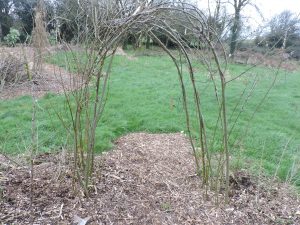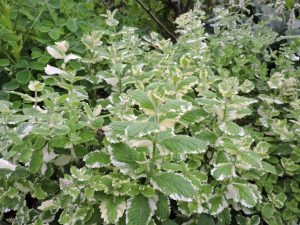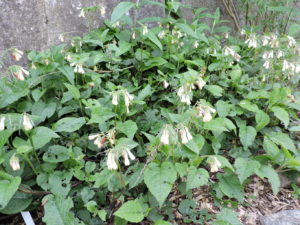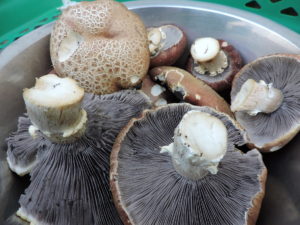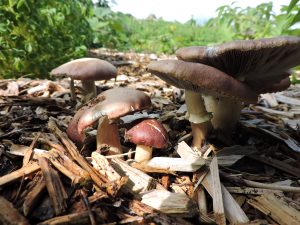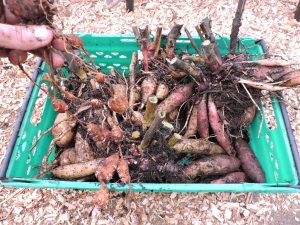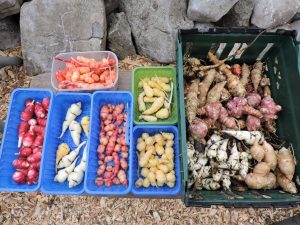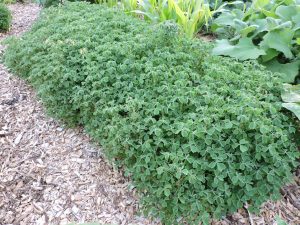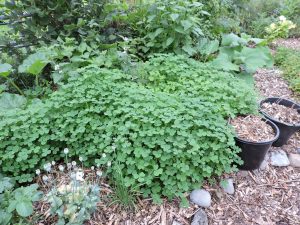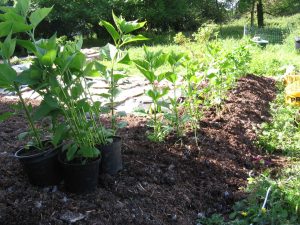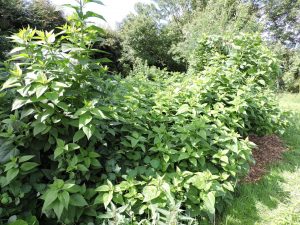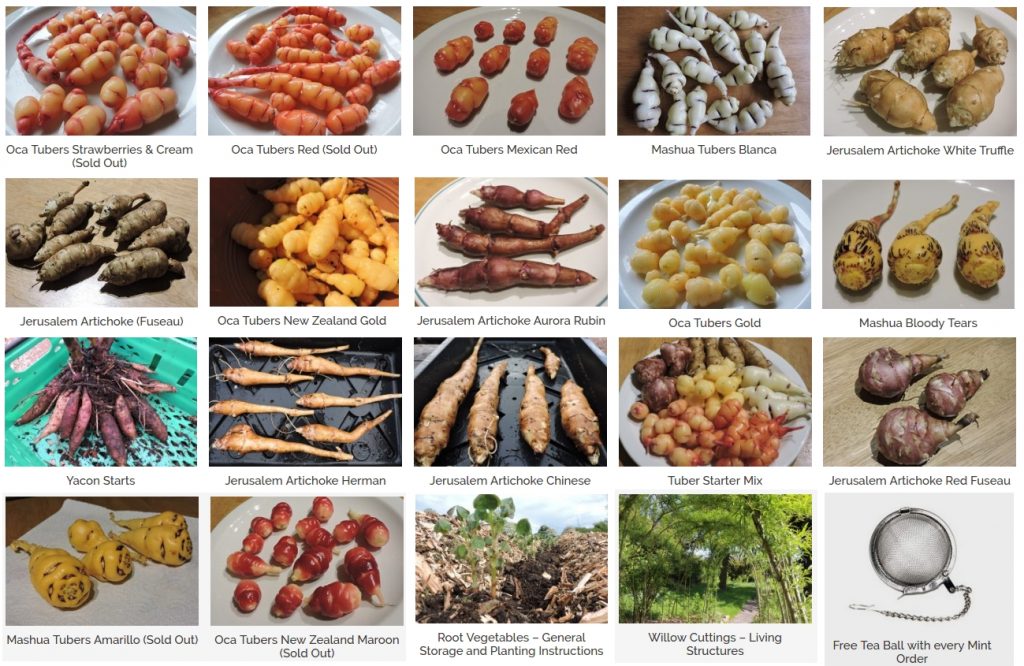Woody cuttings such as Willows or Currants
should not be allowed to dry out during storage and are best stored in a bucket half filled with water. This way they will be fine for weeks until you’re ready to plant them. Hardwood cuttings can be planted while trees are dormant in Winter from November until April. We always cut the bottom of each cutting off at an angle to help push into the ground and to make it easy to identify the direction. Scarring each cutting before planting is not necessary, although we tend to cut the bottom off fresh before planting to expose the green cambium layer which will help it root.
Root cuttings such as Mint, Comfrey & Horseradish
are best stored in moist potting soil, they are hardy and can be potted in Winter and will start growing once it gets warmer in Spring. You can plant out into the garden directly, but we like to start them off in a pot so they don’t get lost. Plant about 1-2 cm deep and keep moist.
Mushroom Woodchip Spawn (Mycelium)
Please make sure you keep the Winecap woodchip spawn in a dark place until you are ready to use it in the garden. If more than a few days, please remove it from the plastic bag and store it in a tray or a pot. When ‘planting’ use fresh woodchips no older than a month, the fresher the better and don’t let it dry out. Paul Stamets top tip is to put a layer of wet cardboard with the corrugated side up sprinkling the spawn on top and covering it with fresh woodchips, ideally from deciduous hardwood trees but they will grow in softwood too. The mushrooms root system is called mycelium. This is takes about a year to establish, but after that you can get several flushes of Winecap (King Stropharia) mushrooms per year with no maintenance. You can feed the garden fresh woodchips by simply layering about 3cm on top. The soil life will go to work and slowly break those down into compost with delicious culinary delights as a byproduct and a symbiotic relationship helping plants to gather nutrients by extending their root systems in return for sugars produced by photosynthesis.
Autumn Bulbs – Garlic, Onions & Leeks
For general storage we would recommend to cure bulbs for around 2 weeks and keep in a dry, dark place over Winter. Plant garlic out into the garden before Winter so that the frost can split the bulbs into individual cloves for harvesting next Summer. See video for more details.
Ancient edible tubers
such as Oca, Yacon, Mashua, Chinese artichoke, Jerusalem artichoke, Ullucus, Tiger nuts, Madeira vine, Apios and many more can be stored in much the same ways as the more well known potato, carrot and other root vegetables. Ideally tubers are kept in an almost dry potting compost, peat or sand to keep the air off preventing mold. Keep in an open tray, pot or bucket in a cold but frost free and well ventilated shed or root cellar. In our experience tubers can be stored in a well drained and thickly mulched garden nearly all winter and harvested as needed.
Tiger nuts are dried for storage, please soak in water for 24 hours before planting. Please note they are frost sensitive, so they are best planted out after chances of a hard frost have passed. You could start them early in trays or pots in a greenhouse from March to May to give them a head start.
Most of them quite are similar to the well known potato but often healthier and can be grown with near zero maintenance. We like to get them off to a good start by planting them in 0.5-1L pots in a greenhouse around March or April and plant them out into our mulched gardens as strong seedlings in May when there is no more hard frosts. Please note most of these tubers are hardy enough to take a light frost, but Oca and Yacon is best planted out when the chance of a late frost has passed. 4-6 weeks is plenty to grow tubers into nice strong seedlings before planting them out. We have some videos on planting and harvesting tubers.
Like with all tubers you could plant them out directly, but we always grow all of our plants into strong seedlings in the greenhouse first. This has 2 main advantages: To extend the growing season by starting them early and to help them take off quickly once planted out into the garden for them to grow into healthy plants so that there is a much lower chance of the slugs showing an interest. With lasagne style gardening the roots spread rapidly through the malleable soil and the slugs simply can’t keep up!
All tubers can be grown in a relatively small space and close together, however the more space you can give them the more production you can expect. Ideally full sun is advisable but not necessary to grow tubers. Towards the end of the growing season all of the tuberous plants will flower, but will only go to seed in hotter climates with plenty of sunshine.
Like with all cultivated plants we would suggest keeping them completely weed and grass free. Mulching the entire growing space in the garden helps to keep weed pressure to near zero so you can enjoy planting and harvesting your crops rather than chasing the weeds all year.
Tuber ID Chart:
We wish you a successful and abundant growing season,
Martin and Bianca,
Gardens for Life
Resources:





